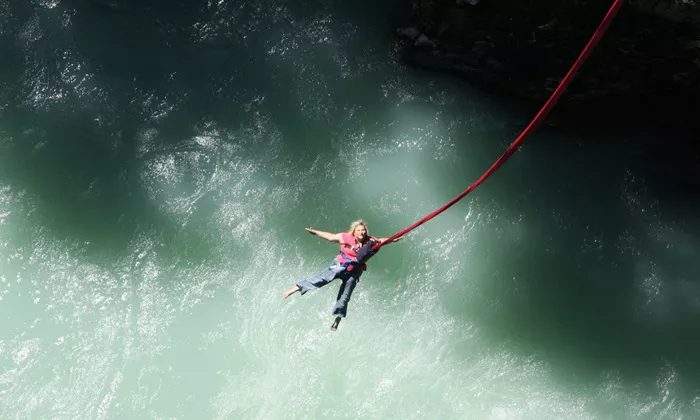Bungee jumping is an exhilarating extreme sport that involves jumping from a high structure while connected to a large elastic cord. While it can be an adrenaline-pumping experience, it also poses certain physical challenges and risks, especially for those who may not be accustomed to such intense activity. Recovery after bungee jumping is crucial to ensure that the body returns to its normal state and to mitigate any potential injuries. This article will provide a detailed overview of effective recovery methods following a bungee jump.
The Importance of Recovery
Recovery is essential for several reasons:
Physical Healing: The body undergoes significant stress during a bungee jump, which can lead to muscle soreness, joint pain, and fatigue.
Mental Rejuvenation: The thrill of jumping can be mentally taxing. A proper recovery process helps in regaining mental clarity.
Injury Prevention: Effective recovery strategies reduce the risk of injuries that may occur due to improper post-jump care.
Immediate Post-Jump Recovery Steps
1. Rest and Relaxation
After completing a bungee jump, it is vital to allow your body some time to rest. This helps in reducing immediate fatigue and muscle tension.
Find a Comfortable Space: After landing, move to a designated recovery area where you can sit or lie down comfortably.
Breathing Exercises: Engage in deep breathing exercises to help calm your heart rate and relax your muscles.
2. Hydration
Rehydrating after the jump is crucial as the body may lose fluids through sweat during the experience.
Water Intake: Drink plenty of water immediately after your jump. This helps replenish lost fluids.
Electrolyte Solutions: Consider consuming sports drinks or electrolyte solutions to restore essential minerals lost during the jump.
SEE ALSO: Where Was Bungee Jumping Invented?
3. Gentle Stretching
Stretching helps alleviate muscle tightness and improve blood circulation.
Neck and Shoulder Stretches: Gently tilt your head side to side and roll your shoulders back.
Leg Stretches: Perform gentle hamstring and quadriceps stretches while seated or standing.
4. Foam Rolling
Using a foam roller can help relieve muscle soreness by increasing blood flow and breaking down muscle knots.
Target Areas: Focus on areas that feel tight or sore, such as the calves, thighs, and back.
Duration: Spend about 5–10 minutes rolling out these areas post-jump.
Short-Term Recovery Techniques
1. Ice Therapy
If you experience any swelling or pain in specific areas after your jump, applying ice can be beneficial.
Ice Packs: Use ice packs on sore muscles or joints for 15–20 minutes every hour as needed.
Compression Wraps: Consider using compression wraps on areas that feel particularly sore or swollen.
2. Nutrition
Proper nutrition plays a critical role in recovery.
Protein Intake: Consume protein-rich foods such as chicken, fish, eggs, or plant-based proteins to aid muscle repair.
Balanced Meals: Include carbohydrates for energy replenishment and healthy fats for overall health.
3. Sleep
Adequate sleep is one of the most effective recovery methods.
Sleep Duration: Aim for 7–9 hours of quality sleep to allow your body to heal and recover.
Sleep Environment: Create a restful environment by minimizing noise and light.
Long-Term Recovery Strategies
1. Physical Therapy
For those who experience more significant discomfort or injuries, consulting with a physical therapist can provide tailored recovery strategies.
Assessment: A physical therapist can assess any injuries sustained during the jump and create a personalized rehabilitation plan.
Rehabilitation Exercises: Engage in specific exercises designed to strengthen affected muscles and improve flexibility.
2. Gradual Return to Activity
After recovering from any soreness or injuries, gradually return to physical activities.
Start Slow: Begin with low-impact exercises such as walking or swimming before resuming high-impact activities.
Listen to Your Body: Pay attention to any discomfort; if pain persists, consult a medical professional.
3. Mindfulness and Mental Health Care
The mental aspect of recovery is just as important as the physical one.
Meditation Practices: Engage in mindfulness meditation to help reduce anxiety related to extreme sports.
Mental Conditioning: Consider working with a sports psychologist if you feel anxious about future jumps or extreme sports activities.
Conclusion
Recovering from bungee jumping involves several steps aimed at ensuring both physical and mental well-being. By incorporating rest, hydration, gentle stretching, proper nutrition, and adequate sleep into your post-jump routine, you can significantly enhance your recovery process. For those who may experience injuries, seeking professional help through physical therapy is advisable. Remember that taking the time to recover properly not only prepares you for future jumps but also ensures that you enjoy the thrill of bungee jumping safely and sustainably.
Related topics:
- What Is the Weight Limit for Bungee Jumping?
- What Does Bungee Jumping Feel Like?
- How Is Bungee Jumping Performed?

